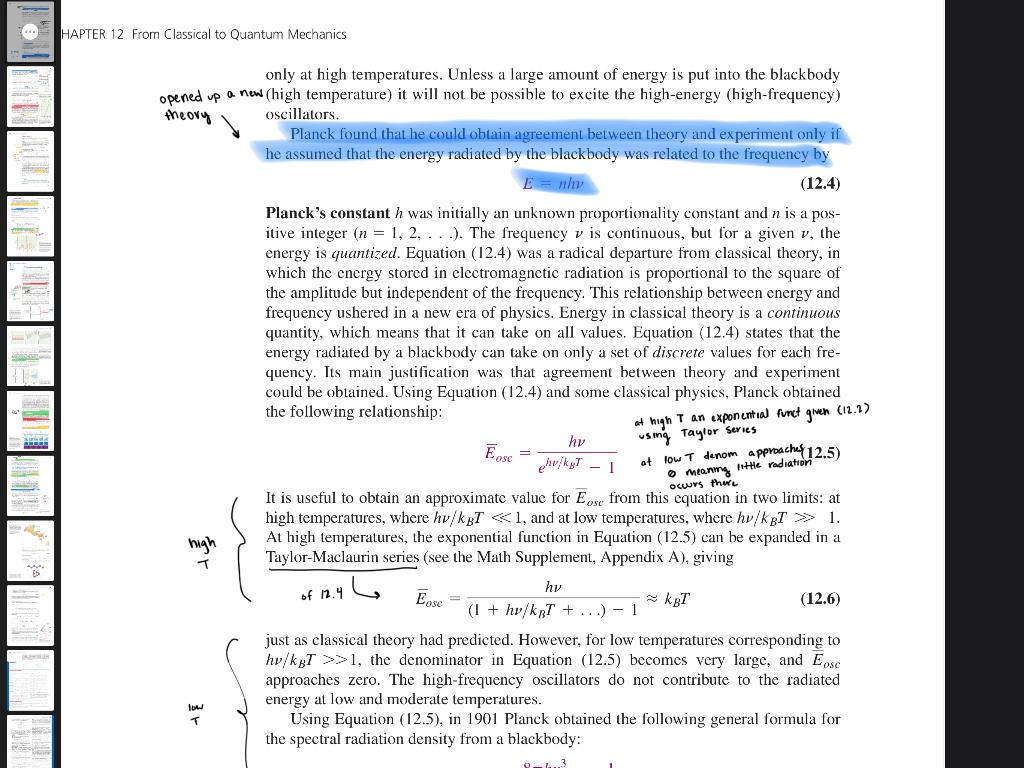Answered step by step
Verified Expert Solution
Question
1 Approved Answer
Regarding blackbody radiation and the Eosc equation where at high temperatures the equation shown is roughly equal to boltzmann constant multiplied with temperature. How is

Regarding blackbody radiation and the Eosc equation where at high temperatures the equation shown is roughly equal to boltzmann constant multiplied with temperature. How is the taylor maclaurin series done as I am unsure of where "e" went?
Planck found that he could obtain agreement between theory and experiment only if he assumed that the energy radiated by the blackbody was related to the frequency by E=nhw Planck's constant h was initially an unknown proportionality constant and n is a positive integer (n=1,2,). The frequency is continuous, but for a given , the energy is quantized. Equation (12.4) was a radical departure from classical theory, in which the energy stored in electromagnetic radiation is proportional to the square of the amplitude but independent of the frequency. This relationship between energy and frequency ushered in a new era of physics. Energy in classical theory is a continuous quantity, which means that it can take on all values. Equation (12.4) states that the energy radiated by a blackbody can take on only a set of discrete values for each frequency. Its main justification was that agreement between theory and experiment could be obtained. Using Equation (12.4) and some classical physics, Planck obtained the following relationship: just as classical theory had predicted. However, for low temperatures corresponding to hv/kBT>1, the denominator in Equation (12.5) becomes very large, and Eosc approaches zero. The high-frequency oscillators do not contribute to the radiated energy at low and moderate temperatures. Using Equation (12.5), in 1901 Planck obtained the following general formula for the spectral radiation density from a blackbodyStep by Step Solution
There are 3 Steps involved in it
Step: 1

Get Instant Access to Expert-Tailored Solutions
See step-by-step solutions with expert insights and AI powered tools for academic success
Step: 2

Step: 3

Ace Your Homework with AI
Get the answers you need in no time with our AI-driven, step-by-step assistance
Get Started


